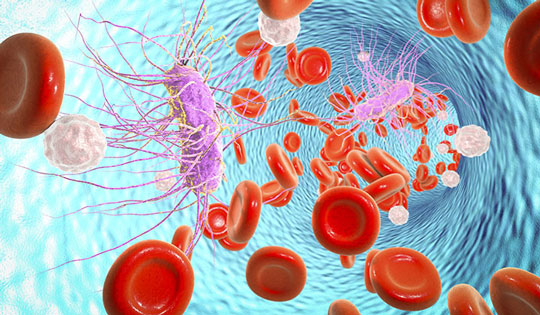Sepsis: An Unrecognized Risk

Sepsis occurs when an overwhelming response to an infection triggers widespread inflammation. The ensuing dilation of blood vessels and decrease in blood circulation robs organs of oxygen and nutrients, potentially leading to septic shock, in which blood pressure is dangerously low and organ failure can occur.
Who Gets Sepsis?
Anyone can develop sepsis after an infection, and according to the National Institute of General Medical Sciences, doctors aren’t always able to find the cause. However, certain groups are more at risk. Those include:
- Burn patients
- Infants
- People with cancer or diabetes
- Patients with impaired immune systems
- Older adults
The good news is that the majority of those who develop sepsis survive the disease. These individuals do, however, have increased rates of long-term physical and cognitive challenges. This is often referred to as post-sepsis syndrome. Fatigue and post-traumatic stress disorder are also common.
Protect Yourself
The best way to protect against sepsis is to get vaccinated against diseases such as pneumonia and influenza, which can potentially lead to sepsis. Also, take steps to prevent common illnesses by:
- Covering your nose and mouth when you cough or sneeze
- Eating a healthy diet
- Exercising regularly
- Keeping your hands away from your eyes, nose and mouth
- Staying home when you are ill
- Washing hands frequently or using hand sanitizer when soap and water aren’t available
In addition, whenever you have a cut or wound, clean it regularly and do daily checks for signs of infection, and seek rapid treatment for any infection that doesn’t show signs of improvement with treatment.
Sepsis-MRSA Connection
Sometimes mistaken for each other, sepsis and methicillin-resistant Staphylococcus aureus (MRSA) are two different medical conditions.
MRSA is a skin infection caused by bacteria that have developed resistance to antibiotics. MRSA can be community-acquired, meaning it is contracted while the patient is outside of the hospital, or hospital-acquired, in which the patient acquires it while in a medical facility. Both forms of MRSA can develop into sepsis if left untreated.
- Sepsis is commonly treated with antibiotics and fluids.
- Staph, strep and E. coli bacteria are the three most common germs linked to sepsis infections.
- Another study from the same publication noted significant “clusters” of sepsis in central Appalachia, middle Georgia, and the Mississippi Valley.
CDC.GOV, MEDLINEPLUS.GOV, SEPSIS.ORG, AAFP.ORG, NEWSINHEALTH.NIH.GOV, NCBI.NLM.NIH.GOV, CDC.GOV, SEPSIS.ORG, NIGMS.NIH.GOV, NIGMS.NIH.GOV, SEPSIS.ORG, SEPSIS.ORG, CHESTNET.ORG, SEPSIS.ORG, SEPSIS.ORG, NCBI.NLM.NIH.GOV, HAWAII.EDU, NCBI.NLM.NIH.GOV
